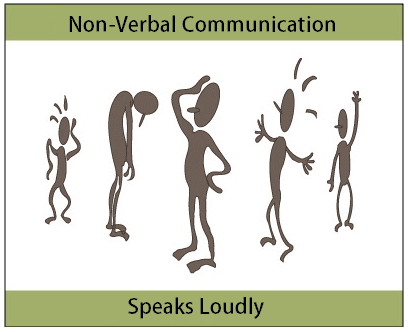Teaching strategies and supports for students with Non-Verbal Learning Disorder.
Non-verbal learning Disorder (NVLD) is a neurodevelopmental condition that impacts an individual’s ability to interpret non-verbal cues and understand spatial relationships such as drawing, finding patterns, or organization.
Currently, NVLD is not listed in the DSM-V and is not as well known as other learning disorders. Too, a lack of awareness of NVLD means many students may often be passed over or misdiagnosed with ADHD or autism spectrum disorder. NVLD poses unique and sometimes significant challenges that can affect students academically and socially.
Understanding Non-Verbal Learning Disorder:
NVLD has characteristics similar to High-Functioning Autism and ADHD. Individuals with NVLD struggle with visual-spatial tasks, higher-order comprehension, and interpreting non-verbal language. Too, they may have sensory sensitivities and difficulty with math. Often, NVLD is marked by high verbal abilities in contrast to lower abilities in nonverbal processing.
- Characteristics of NVLD:
-
- Difficulty interpreting non-verbal cues such as body language and facial expressions.
- Challenges in understanding spatial relationships and coordinating movements.
- Strong verbal abilities often lead to a misconception that the individual does not have a learning disorder.
- Tendency to focus on details while struggling with the bigger picture.
- May have a math disability or co-morbid dyscalculia
According to the Child Mind Institute, These characteristics are often overlooked in the early grades. Most students with NVLD are not diagnosed until after the 5th grade when gaps in social understanding, higher-order comprehension, and math become apparent.
- Impact on Social Interactions:
-
- Difficulty making and maintaining friendships due to challenges in understanding social cues.
- Misinterpretation of others’ intentions, leading to conflict with peers
- Struggles in team-based activities and cooperative learning environments.
For many students with NVLD, difficulty in social interactions results in a reliance on technology to communicate. Without the non-verbal components of social interaction, they can rely on their strong verbal abilities when communicating. Students with NVLD can become overly reliant, even obsessed with their phones and other devices.
- Educational Challenges:
-
- Difficulty with tasks that involve visual-spatial skills, such as geometry.
- Challenges in executive functioning skills, impacting academic performance.
- Need for explicit instructions and verbal explanations in learning.
- Difficulty interpreting implied or inferred meaning
- Difficulty in large or chaotic learning environments due to sensory overwhelm
For students with NVLD, educational challenges can look like inattention and lack of engagement. Without proper instruction, positive encouragement, and accommodations, students with NVLD struggle to get started with tasks and work through difficulties.
Strategies for Support:
Teacher Education: The majority of educators have little to no knowledge of NVLD
-
-
- Awareness among educators and parents to recognize signs of NVLD.
- Collaboration with professionals, including psychologists, occupational therapists, and educational specialists
-
- Educational Approaches:
-
-
- Individualized education plans (IEPs) that address the specific needs of students with NVLD.
- Implementing visual aids, verbal instructions, and alternative learning methods to enhance comprehension.
- Small class size, reduced distractions, visual stimuli, and noise
- Break down information into manageable chunks and scaffold information, cycling back to stimulate memory and connections.
-
- Social Skills Training:
-
-
- Targeted interventions to improve social skills, including interpreting non-verbal cues and understanding social norms.
- Group activities that encourage teamwork and cooperation.
-
- Therapeutic Support:
-
-
- Access to counseling and therapy to address emotional and social challenges.
- Counseling interventions to manage anxiety and stress associated with social interactions.
- Occupational therapy for coordination and sensory overwhelm
-
- Parental and Teacher Involvement:
-
- Regular communication between parents, teachers, and support staff to monitor progress.
- Providing resources and training for educators to create inclusive learning environments.
How Bayhill High School meets the needs of students with NVLD
Example: Graphing in Algebra – Graphing poses unique challenges with visual-spatial orientation. Bayhill provides the following support and instruction to students.
- Graph paper should clearly label each axis and the direction of movement. In the example below, the graph paper is always labeled with X and Y axes. L indicates moving left and R indicates moving right. We also label + and – directions. When orienting to the X/Y Axis we ask students to use arrows over X and Y coordinates to remind them which way to move.
- Use large graph paper with larger squares.
- Add language to help students orient to the X/Y Axis and Quadrants. For example, when plotting (3, -4) students would verbalize the following: “Start at 0,0. Count right 3 lines. Now down 4 lines.”
- Since students with NVLD are strong verbally, they can use this strength to improve accuracy with visual-spatial tasks.
- Other accommodations might include using Kami or Desmos to help with handwriting or fine motor deficits.
Non-Verbal Learning Disorder’s impact on students can be profound. By fostering awareness and implementing tailored support strategies, we can implement effective interventions and supports that enable students with NVLD to thrive academically and socially. It is important to recognize and appreciate the unique strengths and challenges associated with NVLD to promote understanding and support within our schools.
IF you are looking for a high school for your child with NVLD, please reach out to our admissions director Artice Jackson at jackson@bayhillhs.org



